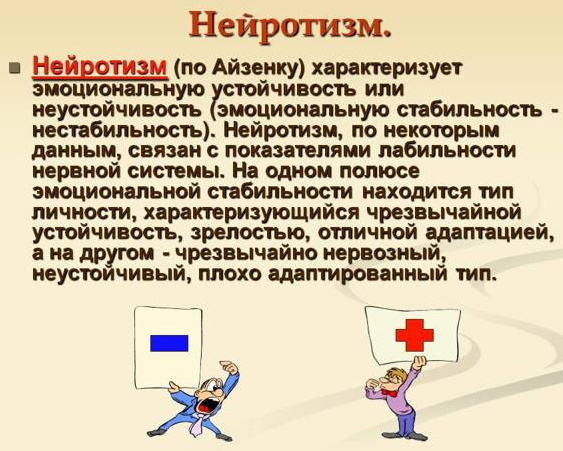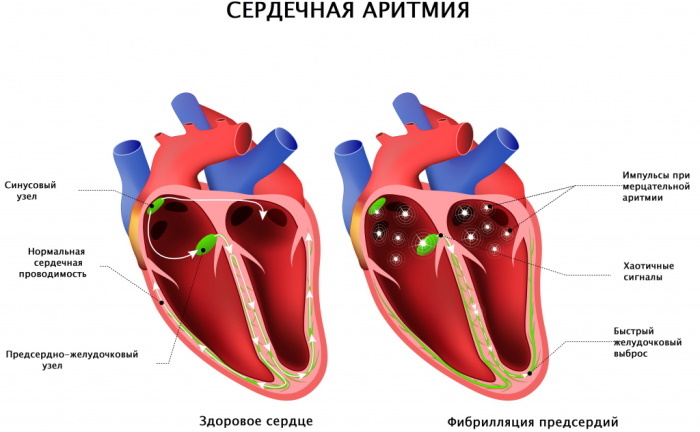Content
- Definition
- Characteristic
- Causes
- Symptoms
- Impact on life
- How to communicate with an unstable person
- How to get rid of
- The developmental approach from childhood (G. Munsterberg)
- Self-education of willpower (E. NS. Ilyin)
- The use of psycho-regulatory training (V. TO. Kalin, V. NS. Muntian)
- Video about instability in psychology
Instability in psychology interpreted in different ways depending on the direction of psychology and the specifics of the study of the phenomenon. The direction in psychology is directly behaviorism, humanistic psychology and psychoanalysis. Psychological (sometimes called "emotional") human stability is his ability in difficult situations to follow the previously laid down program of behavior. For example, the fulfillment of official duties, requirements, social and moral norms.
Definition
Instability in psychology is a property of a person, his characteristic, similar to suggestibility and obsessive thoughts. O. IN. Dashkevich notes that in the aggregate, these qualities develop into uncertainty and low self-esteem.
If we consider instability from the point of view of the psychology of emotions, then it will manifest itself in opposition to emotional stability. In turn, emotional stability was studied by such Russian psychologists and psychiatrists as L. M. Abolin, M. AND. Dyachenko and V. BUT. Ponomarenko.
In their and subsequent studies, emotional stability is defined as the stability and stability of emotional states (mental balance). It is noteworthy that emotional states can be both joy, "average" state, and sadness, sadness, longing - that is, emotions with negative signs. Despite this, if the emotional state does not change so often, then a person can be called emotionally stable.
In turn, the stability of I. Reikovsky considered a property of people who have low sensitivity to emotional impulses. It turns out that instability, on the contrary, manifests itself in excessive sensitivity, an individual's accentuation on emotions.
To emotionally unstable people in 1948 K. TO. Platonov and L. M. Schwartz attributed those people who are emotionally excitable and prone to frequent switching between emotional states. To ensure the effectiveness of the activities performed by such people, it is necessary to train volitional qualities, which were listed earlier.
Characteristic
People with emotional instability have less ability to plan. In extreme cases (psychiatrist's diagnosis), this is a lack of planning at all. In addition, the actions of the individual become so impulsive that not only the surrounding people, but also the person himself, cannot explain their cause. Behavior becomes unpredictable.
More often than not, emotionally unstable people are aggressive. Outbreaks of aggression can occur "on level ground" - that is, for no apparent reason. Anger acts as an emotional reaction of an individual, an impulse.
Aggression, in turn, can manifest itself both "outside" and inside the individual himself. Autoaggression is masochism, suicidal tendencies, depressive syndromes, increased guilt, and sometimes perfectionism.
Emotional instability is interpreted as the ultimate characteristic of individual volitional qualities. So, Ilyin mentions the following properties of a volitional act: strength, stability, breadth and direction.
There is also a view of emotional instability as a personality trait in the scientific psychological literature (contrary to logic, it is a stable property). So, L. NS. Badadina in 1966 argues that it is integrative (integral and at the same time embedded in the personality, inherent in this personality) a property that reflects a person's tendency to go beyond the emotional balance.
The concept of instability is associated with a lack of self-control. Self-control or self-regulation, in turn, is a concept generalized in the scientific psychological literature as one of the manifestations of a volitional act.
Instability in psychology is just the opposite of consciousness and self-control. The presence of impulsivity in behavior, a tendency to act spontaneously.
So, E. NS. Ilyin singles out self-control as one of the components of voluntary behavior control - "will".
In his opinion, functionally it includes:
- Self-determination (motivation).
- Self-initiation and self-inhibition.
- Self-control.
- Self-mobilization and self-stimulation
Another famous Russian psychologist - G. WITH. Nikiforov noted that conscious activity is based on the phenomenon of self-control. That is, it is an obligatory, inalienable quality of a self-aware person and a property inherent in an adequate reflection of the surrounding world by this person. Thus, the opposite of self-control is associated with a lack of awareness.
Agreeing with previous researchers, R. Mac Edge and P. Costa noted that an emotionally unstable person is characterized by an inability to control the expression of their own emotions and desires.
Causes
The reason for mental instability can be the loss of the meaning of life. Otherwise, according to V. Franklu - "noogenic neurosis". This type of neurosis was officially diagnosed in the United States. Noogenic neurosis is a lack of meaning in life, a loss of personal value orientations.
A related term from existential or human psychology is "existential vacuum."
Instability of the psyche can be a consequence of physiological processes occurring at a certain age. Thus, developmental psychology confirms the hypothesis of age-related crises that appear at the end of each period of development. In turn, a person can both experience an unstable state during the "transitional age", and smoothly move to the next stage.
One of the reasons for the appearance of emotional instability can be professional deformation. A person who experiences a lot of stress at work can get neurosis as a result. So, for example, in one of the studies from 2014, the mental stability of police officers in extreme situations of official activity was studied (Gelyakhova, 2014). Extreme situations require from a person the marginal resource costs, emotional and physical tension.
One of the reasons for mental instability is congenital features of the nervous system. Some people are naturally impulsive.
Instability in psychology is a product, according to the concept of psychoanalysis, of destructive impressions in childhood. The psychoanalytic concept determines the development of emotional instability, first of all, by early childhood memories.
As you know, the direction of Z. Freud considers almost all neurotic states as the consequences of destructive childhood impressions. Instability can be a consequence of the struggle between the image of mother and father in childhood, their constant rivalry.
Thus, the following reasons for the development of mental instability can be listed:
- Noogenic neurosis.
- Existential vacuum.
- Extreme situations.
- Choleric type of temperament.
- Congenital excitability of the nervous system.
- Consequence of other mental disorders.
- Symptom accompanying other mental disorders.
- Disharmonious family relationships.
- The struggle between the images of father and mother.
- Strong emotional shock, resulting in self-doubt.
Symptoms
Instability manifests itself in human behavior. Most often it can be observed in childhood and adolescence. For example, children playing in a sandbox can quarrel several times in 15 minutes (emotions with a negative sign) and immediately reconcile (emotions with a positive sign).
Failure to control their feelings and desires often manifests itself as irresponsibility and low self-esteem, because they anxiously anticipate a certain problem situation. And, getting into such a situation, individuals feel despair. They describe themselves as helpless. It is difficult for them to cope with “fate”.
Many Russian psychologists have been involved in the study of emotional instability. One of them - L. NS. Baladina - proposed to assess the sustainability according to 4 criteria. So, according to Baladina, the following signs serve as indicators of emotional instability:
| Sign | Manifestation | Explanation |
| Increased anxiety | It can manifest itself as a personal quality (LT - personal anxiety), which is relatively constant; and as a situational manifestation (RT - reactionary anxiety), which manifests itself only in certain states and conditions. Both the one and the other type of anxiety in the minimum values is necessary. | According to the Yerkes-Dodson law, which some psychologists from the field of motivation also transfer to anxiety - both high levels of anxiety and low levels lead to a loss of effectiveness. There is a certain "optium", observing which the maximum productivity and self-realization of the individual is achieved. |
| Frustration | It is manifested by such emotions as disappointment, anxiety, procrastination, irritability, boredom, increased guilt, feelings of loneliness (Dmitrochenko, 2016). | It is defined as an emotional and mental state that is a consequence of the dissatisfaction of needs. In turn, psychologists separately distinguish social frustration as a consequence of the dissatisfaction of social needs: communication with peers, relatives, in a work collective, etc. Moreover, the reason may be not only the lack of communicative activity, but also dissatisfaction with it. |
| Fears | Fear is always objectively conditioned, in contrast to anxiety. Anxiety involves fear, discomfort, a tendency to avoid some indefinite impact. That is, a person has no idea, or it is too vague, about what awaits him: disapproval, violence, censure, and so on. Fear is singled out in detail: for example, the fear of death. In consciousness, the object of which the person is afraid is clearly represented. In addition, fear arises only when interacting directly with the object of fear. | E. N. Crying in 2000 describes fear as one of the types of an affective negative state of human life. However, he emphasizes both the biological and psychological significance, even the need for fear for the individual. It acts as an ontological one - that is, as the basis of development, the structure of the personality. In his opinion, nothing can be more effective for a quick analysis of the situation than human fear. It is he who allows you to quickly take action, react in the "fight or flight" category. |
| Neuroticism | The neurotic reaction manifests itself in aggression, increased excitability, anxiety in a stressful or extreme situation. The qualities of a neurotic personality include fast, impulsive integration into a new team, suboptimal, changeable behavior patterns and emotional instability. In psychodiagnostic techniques, it is recorded by the manifestations of emotions. |
According to the interpretation of neuroticism in the psychodiagnostic technique of G. Eysenck by definition of temperament, neuroticism is emotional affective excitability, instability, which is caused by the autonomic nervous system. |

NS. Fress in 1975 singled out neuroticity as emotional instability, which is characterized by a person's susceptibility to various emotiogenic situations. Such situations can be very joyful or, conversely, sad events. That is, the apogee of the positive and negative emotional process.
Impact on life
Instability in psychology is, first of all, “walking on the edge”. People who are unstable are extreme people. They can either be too impressed by something, or, on the contrary, greatly upset, or cause frustration, aggression. Events that did not strongly affect the outlook of an emotionally stable person act too actively on an unstable person.
Emotionally unstable people are characterized by the following:
- Enthusiasm.
- Impressionability.
- Frequent emotional swings (good mood - bad mood).
- Temperament - choleric.
- Impulsiveness.
- Small awareness.
- Lack or low level of self-control.
- Reduction of volitional qualities.
How can this be useful, and how can it harm an individual's life? First, emotional instability strongly affects the sphere of conscious choice. Psychologists and philosophers identify the category of choice as a predetermining human being. Everyone in life chooses: "Live or die?" Thus, unstable people accept fewer deliberate choices than stable ones.
Secondly, emotional changes can cause discomfort.
Both for the personality itself and during social interaction:
- Mood swings make an individual feel insecure. If he cannot rely on himself, then how can others rely on him? Naturally, an increased sense of guilt as a result. In addition, a "bad mood" can catch a person at the most inopportune moment.
- In communicating with others, it is important to maintain consistency so that a certain image of a person can be deposited in the mind of the interlocutor. His speech style, behavior pattern, optimistic or pessimistic character. Unstable people show themselves sometimes sad, sometimes cheerful, sometimes aggressive. Such unpredictability can reject the interlocutor.
Thirdly, unstable people have heightened suggestibility and impressionability. This prevents the formation of personal opinion, non-conformist position in the team and society. Conformity - suppression of the opinion of one person by the opinion of the majority, "herd".
Fourthly, the reduction of volitional qualities (that is, a low ability to regulate behavior through volitional efforts) implies restlessness, irresponsibility and other socially condemned qualities personality. Censured because they are not beneficial for industrial and interpersonal relations. In addition, the low ability to manifest will negatively affects the performance of the individual, fetters on the way to self-improvement.
Of the advantages, one can single out that aspect of the choleric personality, which reads: "choleric - energy." If you channel the energy in the right direction (and this is exactly the problem due to the poor ability to manifestation of volitional qualities), then you can get a more effective employee than an emotionally stable person.
Impressiveness as a positive characteristic allows an individual to constantly be saturated with new information and avoid "stagnation", emotional passivity. Such people rejoice in little things, they are sad over trifles, but, in general, they live life to the fullest.
You can briefly summarize the impact on life of emotional instability can be in the table:
| pros | Minuses |
| Impressionability | Conformity is impressive |
| Energy | Low manifestation of volitional qualities |
| Wide range of emotions | Low awareness |
| Emotional sensitivity | Frequent emotional swings (extreme to extreme) |
| Self-control | Low level of self-control |
How to communicate with an unstable person
A qualified psychologist should help an emotionally unstable person. This specialist uses a special set of trainings, consultations and training programs, which are aimed at the formation and strengthening of volitional qualities.
A person with an unstable emotional state is often prone to an inferiority complex. They are characterized by shyness, isolation, aggressiveness, sadness. Both too good, positive emotions and negative ones are extremes.
When dealing with an unstable person, you should pay attention to those factors that can make him angry or, conversely, upset him. It is necessary to try to avoid the influence of these factors, to strive to regulate the mood of the interlocutor.
It's important to remember that emotionally unstable people are unpredictable. Any reaction to the same, seemingly, stimulus can be expected from them.
How to get rid of
G. B. Bednenko, considering psychocorrectional work with psychopathic personalities, notes that unstable individuals simply learn to say what the psychologist needs. But it cannot be cured. She insists on replacing psychotherapy with social correction or even refusing to help.
To correct the instability, you can use the methods of forming volitional regulation. Willpower can be trained using tests, attitudes, suggestions or psychodiagnostic methods for developing will according to E. NS. Ilyin.
He offers a strategy and tactics for the development of volitional qualities, which includes the proper volitional and moral component of willpower.
The developmental approach from childhood (G. Munsterberg)
Münsterberg argued that a child's weak-willedness is expressed in his inability to keep his attention on a goal for a long time. His approach is based on this - the formation of volitional qualities should come from childhood. It is necessary to learn volitional qualities in childhood, guided by the mentorship of parents and teachers.
It is necessary to teach the child to keep attention on certain goals, to want one thing for a long time. It is necessary to teach the child not only to want, but also to really fulfill.
Self-education of willpower (E. NS. Ilyin)
This method is part of self-improvement. The first stage in the formation of willpower is directly planning the process of self-education of willpower, no matter how paradoxical it may sound.
At the beginning of the program, it is necessary to indicate the desired goals that drive the person. The period of their achievement can be 3-4 years. It is necessary to delineate the goals that can be achieved in a year, half a year or in a day.
In the description of tasks and goals, it is necessary to concretize them. To solve each specific problem, draw up an action plan.
If necessary, use techniques that help mobilize willpower. Such techniques can be self-persuasion, appeal to one's own sense of responsibility, conditioning by logic or scientific knowledge, encouragement, motivation, pride, etc.
The use of psycho-regulatory training (V. TO. Kalin, V. NS. Muntian)
The method consists in the development of volitional abilities through volitional training. This is similar to the activity approach, which often proposes problematic tasks for the individual. The goal must be comprehended by a person and deliberately pursued. Disadvantages, such as, in fact, emotional instability itself, should be perceived as integrative qualities of the personality itself.
Activity = practice. The activity approach claims that the main factor in the development of willpower is the frequent practice of choosing between a conscious, obligatory action, and an impulsive, desired one. Only by often resisting obsessive desires can a person gain strong willpower.
Psychological or emotional instability is the opposite of emotional stability, characterized by mood swings. People who suffer from imbalance do not only have a bad or good mood. They are often impulsive, live in the moment. Instability can be dealt with through the formation of volitional qualities.
Author: Svitkevich Yulia Vyacheslavovna.
Video about instability in psychology
Emotionally unstable personality disorder:



